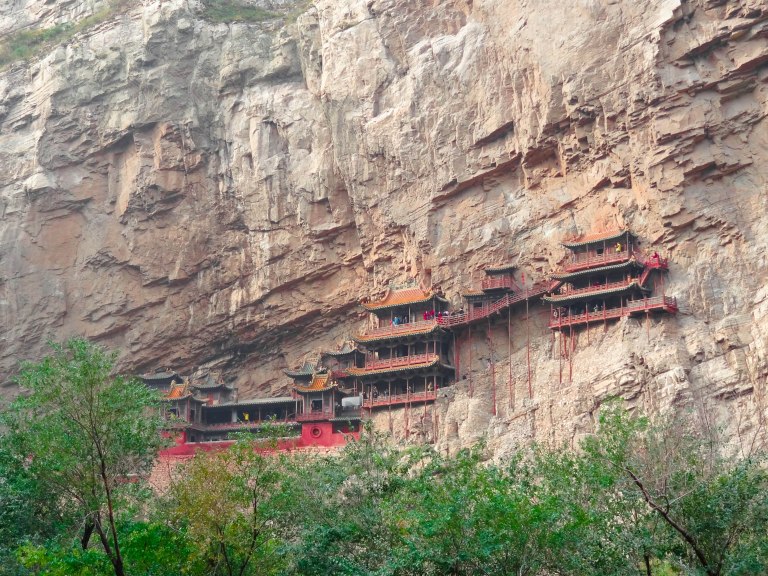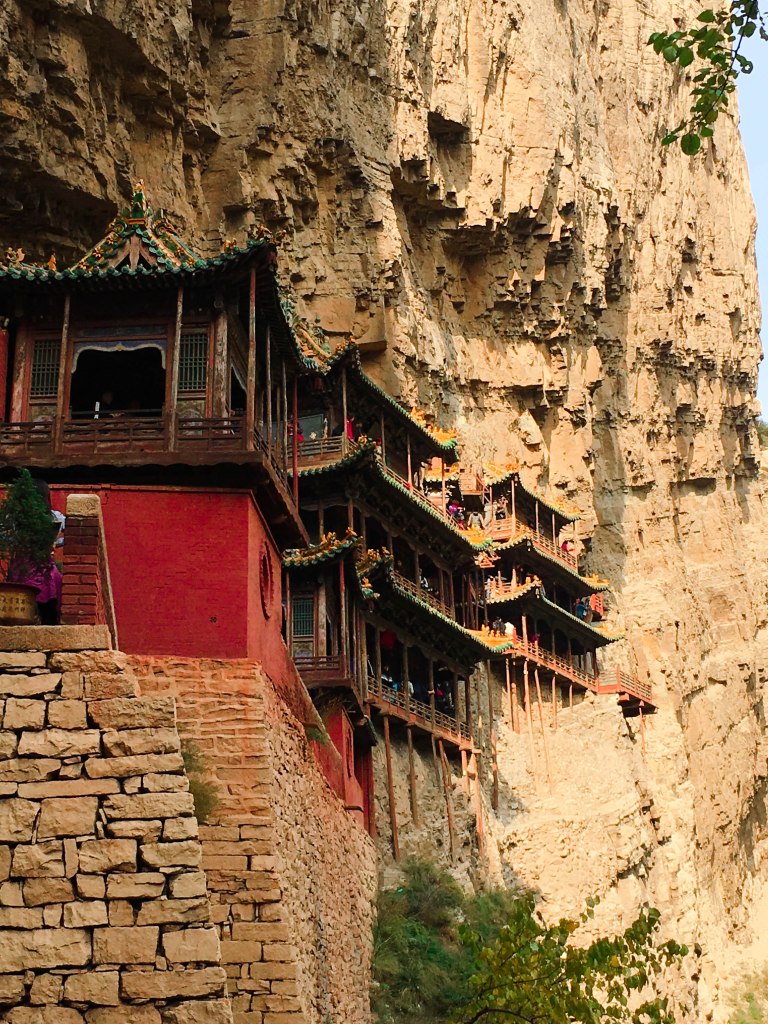I absentmindedly rub my eyes as we travel from the airport to Xuankong si (the Hanging Monastery). It doesn’t occur to me right away that they itch more than usual despite my incessant rubbing. Then I notice the burning sensation in my chest; a feeling I recall finding quite alarming upon my arrival in China. “You’ll get used to it” people told me. It was true. Most of the other cars on the highway are large lorries filled with coal. Datong is a coal mining city and has been called one of the most polluted cities in China. I can taste it in the air.

Nestled in the Golden Dragon Gorge, the Hanging Monastery clings to the side of Hengshan Mountain. At first I am underwhelmed, having visited the Tigers Nest earlier this year. But this monastery has a certain charm that draws me in. Before the valley was dammed in the 1960s, one could only reach this sacred place by repelling down the cliff to it. Armed with this knowledge, I feel quite privileged as I amble up to the monastery easily crossing what is now a stream and wonder what it was like for the monks of yesteryear who were here when it was a precarious journey with a raging river below.

Over the monastery’s 1,400 year history it has seen many incarnations. Unlike other spiritual places re-appropriated by the next faith to come along, this monastery has maintained its original religion — a local nature based shamanism — and has added other belief systems in parallel. One can also pray to the Buddha, Confucius, and Laotzu. During the Cultural Revolution the statues were all decapitated but this holy place still stands.
Not far from the Hanging Monastery is Yungang Grottoes. On our way there we stop in a local village. I clumsily stand in a woman’s yard while my tour guide convinces her to let me see her home. A one room house with no kitchen or bathroom newly built by the government. Half of the room is an elevated platform. It serves as a sitting area by day and she places her bedding there at night to sleep. Ever since her husband died she lives here alone. Her son joined the army in hopes of a steady income. It has made her life as a farmer harder but ultimately she is happy for her son’s achievement. Down the road a bit I meet her neighbors. An elderly couple about 90 years old. Their home is the same layout; bought for them by their son who successfully moved to the city to become a businessman. They welcome me in to their modest home. The smell of their coal stove heating their lunch is overpowering. She invites us to stay for tea but we make our apologies and leave them to their lunch. As we pull off the dirt road towards the highway, I notice the frail man peaking his head out from around the corner to watch our departure.
Having reached the grottoes, I wonder what this place was like back when the first of the Buddhist caves was carved out of the sandstone in 453. These grottoes have suffered. At times they were desecrated. At times the attempts to preserve them created new problems. Only a small number of the caves remain. Many of the statues are partially washed away from past flooding of the river nearby. Many bear pockmarks, an attempt during the Qing Dynasty (300 years ago) to prevent the statues from eroding by drilling dowels into them securing them to the wall.
Some of the carvings look Greek. As the legend goes, an artist had traveled to Athens and returned inspired by the statues of the Gods and Goddesses he saw there. One can easily see the Greek influence in his work and it reinforces the power of travel, even a thousand years ago.










Wonderful. Thanks for sharing Kelly
Sent from my iPhone
>
LikeLiked by 1 person
One of a kind collection of memories you are accumulating, my friend.
LikeLiked by 1 person
Amazing pictures and great writing as always. I’m so glad you have the opportunity to see these remote amazing places.
LikeLiked by 1 person
Once again, many thanks for taking us with you on your adventures!
Are you still on track to leave China before we get there with SAS this spring (31 Jan-5 Feb)?
LikeLiked by 1 person
sorry, friend! I’ll be long gone by then. enjoy!
LikeLike